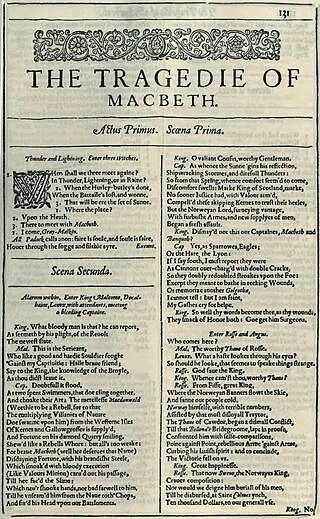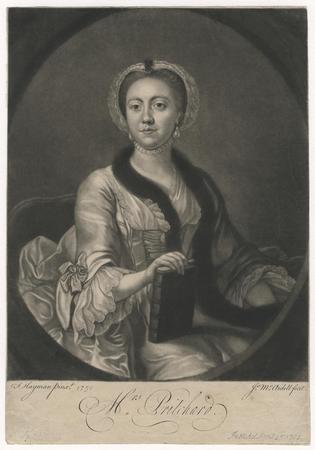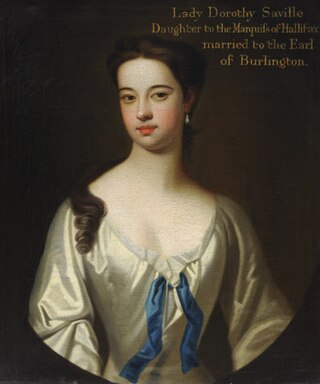
Macbeth is a tragedy by William Shakespeare. It is thought to have been first performed in 1606. It dramatises the damaging physical and psychological effects of political ambition on those who seek power. Of all the plays that Shakespeare wrote during the reign of James I, Macbeth most clearly reflects his relationship with King James, patron of Shakespeare's acting company. It was first published in the Folio of 1623, possibly from a prompt book, and is Shakespeare's shortest tragedy.

Romeo and Juliet is a tragedy written by William Shakespeare early in his career about the romance between two Italian youths from feuding families. It was among Shakespeare's most popular plays during his lifetime and, along with Hamlet, is one of his most frequently performed. Today, the title characters are regarded as archetypal young lovers.

Dame Margaret Drabble, Lady Holroyd, is an English biographer, novelist and short story writer.

The Country Wife is a Restoration comedy written by William Wycherley and first performed in 1675. A product of the tolerant early Restoration period, the play reflects an aristocratic and anti-Puritan ideology, and was controversial for its sexual explicitness even in its own time. The title contains a lewd pun with regard to the first syllable of "country". It is based on several plays by Molière, with added features that 1670s London audiences demanded: colloquial prose dialogue in place of Molière's verse, a complicated, fast-paced plot tangle, and many sex jokes. It turns on two indelicate plot devices: a rake's trick of pretending impotence to safely have clandestine affairs with married women, and the arrival in London of an inexperienced young "country wife", with her discovery of the joys of town life, especially the fascinating London men. The implied condition the Rake, Horner, claimed to suffer from was, he said, contracted in France whilst "dealing with common women". The only cure was to have a surgeon drastically reduce the extent of his manly stature; therefore, he could be no threat to any man's wife.

Margaret Woffington, known professionally as Peg Woffington, was an Irish actress and socialite of the Georgian era. Peg and Peggy were a common pet name for those called Margaret until the late 20th century.

Hannah Pritchard was an English actress who regularly played opposite David Garrick. She performed many significant Shakespearean roles and created on stage many important female roles by contemporary playwrights.

Every Man in His Humour is a 1598 play by the English playwright Ben Jonson. The play belongs to the subgenre of "humours comedy", in which each major character is dominated by an over-riding humour or obsession.

The Great Garrick is a 1937 American historical comedy film directed by James Whale and starring Brian Aherne, Olivia de Havilland, and Edward Everett Horton. The film also features Lionel Atwill, Luis Alberni, Melville Cooper, and future star Lana Turner, who has a bit part. Based on the play Ladies and Gentlemen by Ernest Vajda, the film is about the famous eighteenth-century British actor David Garrick, who travels to France for a guest appearance at the Comédie Française. When the French actors hear rumours that he said he will teach them the art of acting, they devise a plot to teach him a lesson. Though often overlooked by critics in favor of Whale's horror films, The Great Garrick was chosen by Jonathan Rosenbaum for his alternative list of the Top 100 American Films.

The Black Knight is a 1954 British-American Technicolor adventure film directed by Tay Garnett and starring Alan Ladd as the title character and Peter Cushing and Patrick Troughton as two conspirators attempting to overthrow King Arthur. It is the last of Ladd's trilogy with Warwick Films, the others being The Red Beret and Hell Below Zero based on Hammond Innes' book The White South.

The Tragical History of King Richard Iii, Alter'd From Shakespeare (1699) is a history play written by Colley Cibber. It is based on William Shakespeare's Richard III, but reworked for Williamite audiences.

The Belle's Stratagem is a romantic comedy of manners, the most successful work of its playwright, Hannah Cowley. It received its premiere on 22 February 1780, filling the 2,000-seat Drury Lane theatre. The play became a major hit of the season, with Queen Charlotte enjoying it so much that she decreed it be performed for the royal family once a season for several years. Its title comes from George Farquhar's play The Beaux' Stratagem.

Rosencrantz and Guildenstern, A Tragic Episode, in Three Tabloids is a short play by W. S. Gilbert that parodies William Shakespeare's Hamlet. The main characters in Gilbert's play are King Claudius and Queen Gertrude of Denmark, their son Prince Hamlet, the courtiers Rosencrantz and Guildenstern, and Ophelia.
Garrick Médecin is a short story written by Joseph Bouchardy, printed 1835/1836 in installments in the newspaper Le Monde Dramatique which was founded by his brother, Anatole Bouchardy. It was the basis for several plays including Sullivan (1852) and Le Docteur Robin (1842) which were respectively adapted into the English plays David Garrick (1864) and Doctor Davy (1865). In 2015, the story was translated into English as "The Acting Physician" and published in Vol. 3 No. 2 of Romance Magazine.

Irene is a Neoclassical tragedy written between 1726 and 1749 by Samuel Johnson. It has the distinction of being the work Johnson considered his greatest failure. Since his death, the critical consensus has been that he was right to think so.

Hearts Aflame is novel by Johanna Lindsey, originally published in June 1987 by Avon Books. It is the second book in the Haardrad Family Saga Series and Lindsey's fourteenth novel. The book reached number three in the New York Times Best Seller list for paperbacks. It has been translated into German, French, Russian, Chinese, Spanish and Greek.

The Rocks of Valpre is a 1935 British crime film directed by Henry Edwards and starring John Garrick, Winifred Shotter and Leslie Perrins. The film was made at Twickenham Studios. It was based on the 1913 novel of the same name by Ethel M. Dell, and was released in the U.S. as High Treason. The film is set in the mid-nineteenth century with plot elements resembling the later Dreyfus Case.

Catharine and Petruchio is a reworking of William Shakespeare's The Taming of the Shrew by British playwright and actor David Garrick. It was written in 1754 and was performed far more often than the original The Shrew through the eighteenth and nineteenth centuries.

Garrick's Temple to Shakespeare is a small garden folly erected in 1756 on the north bank of the River Thames at Hampton in the London Borough of Richmond upon Thames. Grade I listed, it was built by the actor David Garrick to honour the playwright William Shakespeare, whose plays Garrick performed to great acclaim throughout his career. During his lifetime Garrick used it to house his extensive collection of Shakespearean relics and for entertaining his family and guests. It passed through a succession of owners until coming into public ownership in the 1930s, but it had fallen into serious disrepair by the end of the 20th century. After a campaign supported by distinguished actors and donations from the National Lottery's "good causes" fund, it was restored in the late 1990s and reopened to the public as a museum and memorial to the life and career of Garrick. It is reputedly the world's only shrine to Shakespeare.
Harriet Pitt was a British actress and dancer. She was often credited as Mrs Davenett later in her career.

Dorothy Boyle, Countess of Burlington and Countess of Cork was a British noble and court official, as well as a caricaturist and portrait painter. Several of her studies and paintings were made of her daughters. Through her daughter Charlotte, who married the 4th Duke of Devonshire. A collection of 24 of her works of art descended to the Duke of Devonshire and kept at Chatsworth House.


















